- by New Deal democrat
It is likely that the effects of Omicron as well as quirks of seasonality were behind this week’s big jump in new jobless claims.
New claims jumped 55,000 on a seasonally adjusted basis last week to 286,000. The 4 week average of new claims increased 20,000 to 231,000: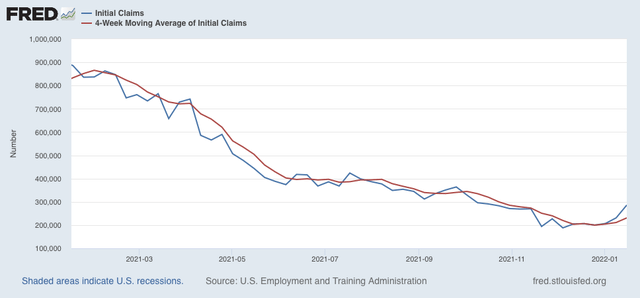
Continuing claims for jobless benefits rose 84,000, to 1,635,000, which is still very close to a 50 year low (not shown):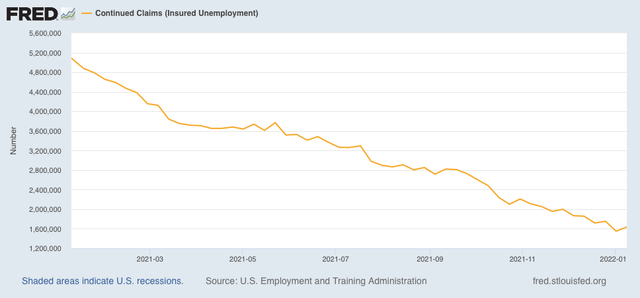
There are probably two reasons for the big jump in new claims. The first is Omicron. We won’t have the State by State breakdown for one more week, but it would hardly be surprising if the big increases were most profound in those States hardest hit by Omicron in the previous weeks (generally, the NYC and DC metro areas). Certainly in the last several weeks Omicron has hit restaurant reservations, which have declined by 25% or more compared with a year ago (graph shows global reservations, but US reservations are nearly identical):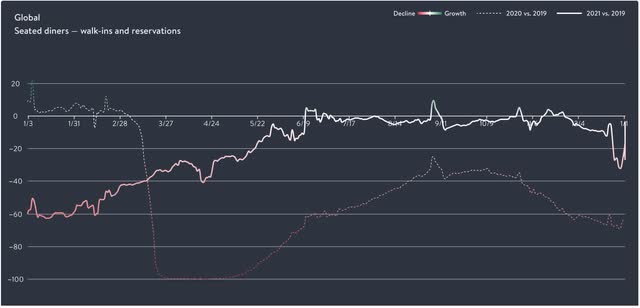
Layoffs in the service industries as a result of gigantic rises in infections would not be a surprise at all.
Secondly, here is a comparison of seasonally adjusted (blue) vs. not seasonally adjusted (red) claims in the past 18 months: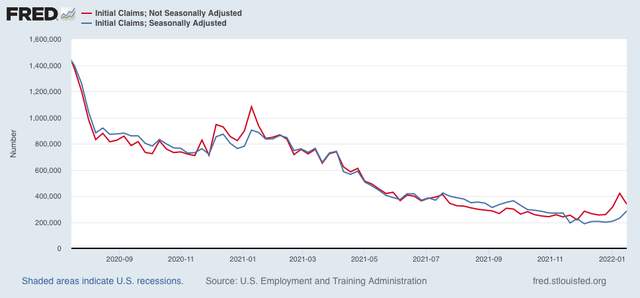
Note that in the corresponding week last year non-seasonally adjusted claims were no higher than seasonally adjusted. This year they failed to decline to that level. More generally, non-seasonally adjusted claims typically are below the seasonally adjusted number from August through November, and then rise to a peak in the second full week of January, as shown above, and also below in this graph of the 10 years just before the pandemic: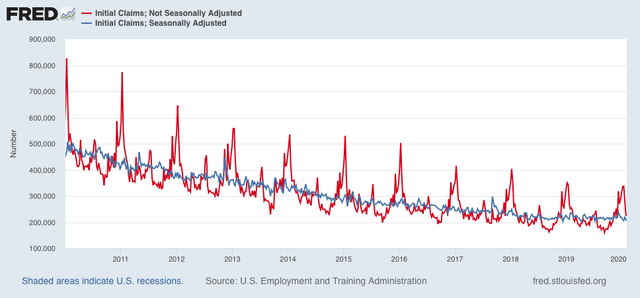
The past 6 months have resulted in levels of new claims equivalent to the range of those during 2016 and 2017, except that typically claims rise slowly during autumn from a low point in August, and in 2021 they declined slowly through autumn. Because of the typically sharp declines from peak in new claims in mid-January, something as simple as the creep of the days of the week for equivalent dates can make a big difference. In other words, next week there may be a much bigger drop than there was for the equivalent week in 2016 and 2017.
The effects of Omicron are going to continue for at least a few more weeks. The quirks of seasonality should resolve after another week. Until I see more going on, I do not see any reason to overreact to the last two weeks’ big increase in claims.